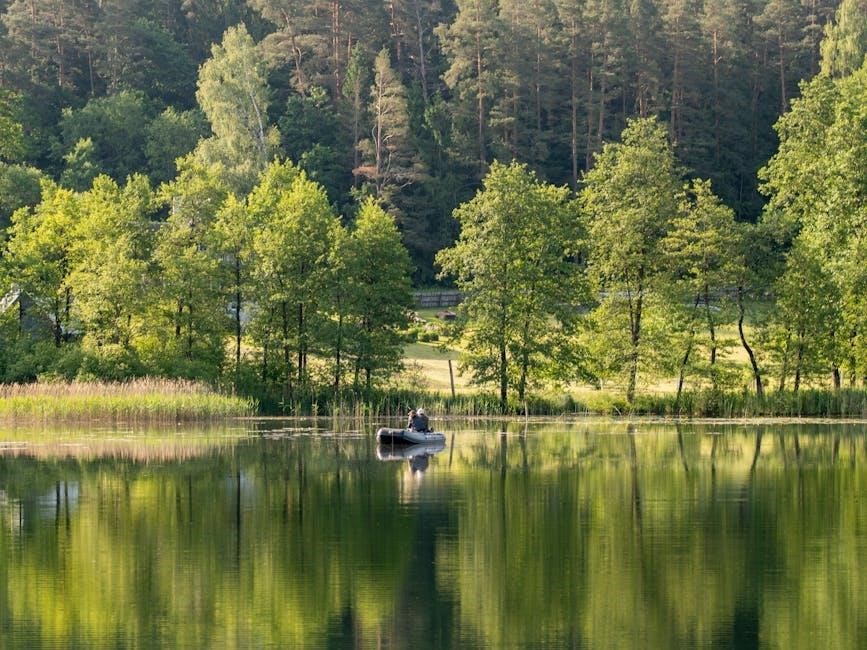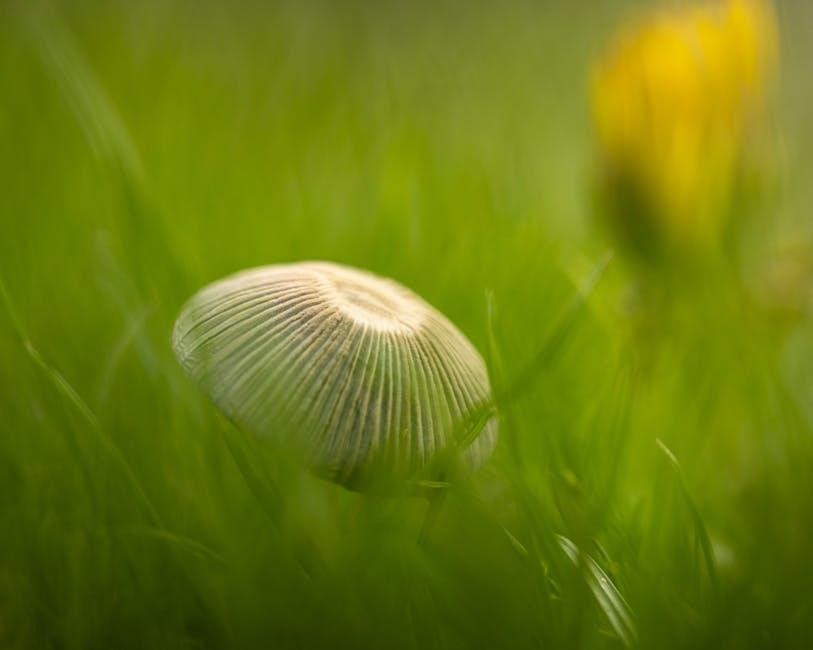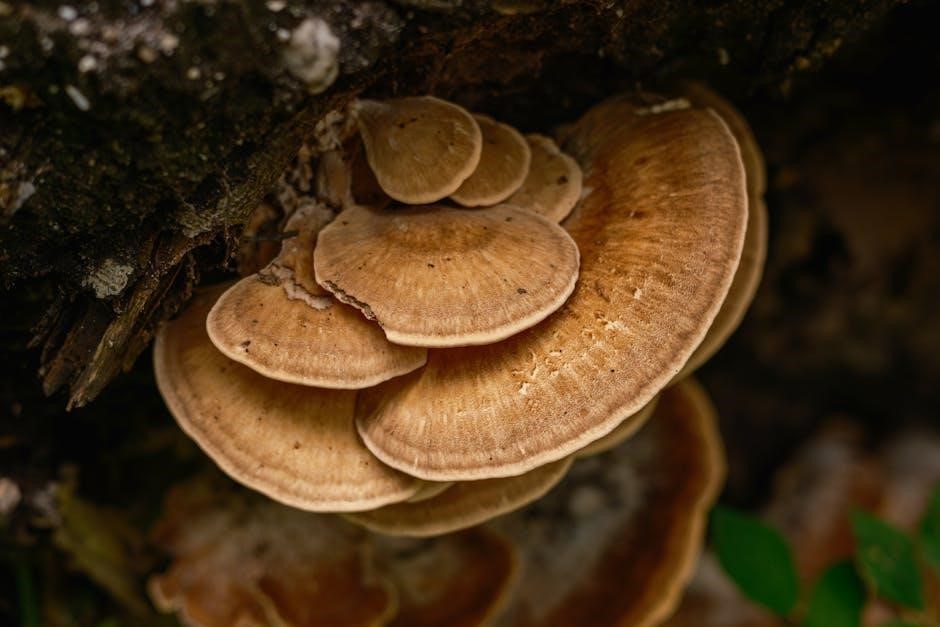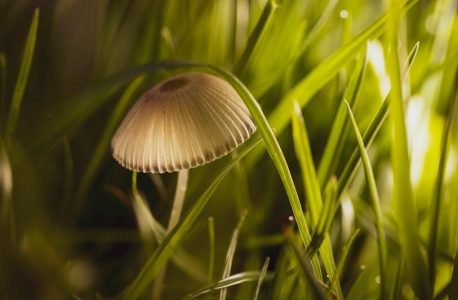Iowa offers a diverse range of wild mushrooms‚ from morels to oyster mushrooms‚ making it a paradise for foragers. Sustainable practices ensure the preservation of this natural bounty for future generations.
Overview of Iowa’s Mushroom Diversity
Iowa’s landscapes support a wide variety of mushrooms‚ including honey mushrooms‚ sulfur shelf‚ and turkey tail. The state’s diverse ecosystems‚ from woodlands to prairies‚ create habitats for both edible and poisonous species. This rich fungal diversity highlights Iowa’s ecological complexity and the importance of conservation efforts to maintain this natural heritage for future generations.
Importance of Sustainable Foraging Practices
Sustainable foraging ensures the long-term health of Iowa’s ecosystems. By harvesting responsibly‚ foragers protect both the environment and future fungal growth. Techniques like avoiding over-harvesting and minimizing habitat disruption are crucial to preserving biodiversity and maintaining the balance of nature for generations to come. This mindful approach fosters a harmonious relationship between humans and the natural world.
Popular Edible Mushrooms in Iowa
Morel mushrooms are a prized delicacy in Iowa‚ while oyster mushrooms‚ hen of the woods‚ giant puffballs‚ and chicken of the woods also offer unique culinary experiences.
Morel Mushrooms: Habitat and Identification
Morel mushrooms thrive in Iowa’s wooded areas‚ river valleys‚ and old apple orchards. They are identifiable by their distinctive honeycomb-like appearance‚ white or light-colored stems‚ and conical caps. False morels‚ resembling morels‚ can be dangerous‚ so accurate identification is crucial. Seasonal conditions like mild winters and wet springs enhance their growth‚ making them a sought-after delicacy among foragers.
Oyster Mushrooms: Growth Patterns and Culinary Uses
Oyster mushrooms in Iowa typically grow on decaying wood‚ logs‚ or stumps‚ thriving in moist environments. They are prized for their delicate flavor and velvety texture. In the kitchen‚ they add versatility to dishes like stir-fries‚ soups‚ and sauces. Their mild taste makes them a great vegetarian option‚ and they can be dried for year-round use‚ enhancing their umami flavor in various recipes.
Chanterelle Mushrooms: Unique Characteristics and Recipes
Chanterelle mushrooms in Iowa are known for their vibrant orange to yellow caps and fruity‚ apricot-like aroma. They thrive in moist‚ wooded areas with rich soil. Culinary uses highlight their earthy flavor‚ often sautéed with butter‚ garlic‚ and herbs. They pair well with poultry or pasta dishes‚ adding a rich‚ umami taste to various recipes while remaining a sought-after delicacy among foragers and chefs alike.
Safety Guidelines for Mushroom Foraging
Accurate identification is crucial to avoid poisoning‚ as Iowa has dangerous lookalikes like false morels. Expert guidance and reliable field guides are essential for safe foraging practices.
Common Poisonous Mushrooms in Iowa
Iowa is home to several poisonous mushrooms‚ including the false morel and destroying angel. These species can be deadly if ingested. They often resemble edible varieties‚ making accurate identification crucial. Expert guidance and reliable field guides are essential to avoid dangerous lookalikes and ensure safe foraging experiences. Always prioritize caution when encountering unfamiliar fungi in the wild.
Methods for Safe Mushroom Identification
Safe mushroom identification requires careful observation and reliable resources. Use field guides specific to Iowa‚ consult with experienced foragers‚ and examine characteristics like shape‚ color‚ and habitat. Be cautious of lookalikes‚ as some poisonous species mimic edible ones. Expert verification is crucial‚ especially for beginners‚ to ensure mushrooms are safe for consumption.

Best Locations for Mushroom Foraging in Iowa
Iowas forests‚ state parks‚ and woodlands provide ideal habitats for diverse mushroom species. Areas with rich soil and moist environments‚ such as near rivers and under deciduous trees‚ are prime spots for successful foraging.
State Parks and Forests Known for Mushroom Growth
Ledges State Park and Yellow River State Forest are renowned for their abundant mushroom growth. These areas‚ with their dense woodlands and moist river valleys‚ support species like morels and oyster mushrooms. The rich biodiversity in Iowas state parks creates ideal conditions for fungi to thrive‚ making them top destinations for foragers seeking wild mushrooms in their natural habitats.
Types of Ecosystems That Support Mushroom Diversity
Iowa’s diverse ecosystems‚ including deciduous forests‚ prairies‚ and wetlands‚ provide habitats for various mushrooms. Deciduous forests support morels and oyster mushrooms‚ while wetlands foster chanterelles. These ecosystems’ unique conditions promote fungal growth‚ enhancing biodiversity. Conservation efforts are crucial to sustain these habitats and ensure the continued diversity of Iowa’s wild mushrooms.
Legal Considerations for Foraging in Iowa
Understanding Iowa’s foraging laws is essential. Personal use generally allows foraging in public areas‚ but commercial activities require permits. Certification may be needed to sell mushrooms legally.
Regulations for Public and Private Lands
Foraging on public lands in Iowa is permitted for personal use‚ but commercial harvesting requires a permit. Private land foraging necessitates landowner permission. Some private properties may require liability insurance for access; Additionally‚ out-of-state mushroom hunters must register if selling in Iowa‚ and local certification may be needed to sell mushrooms legally in one’s home state.
Permits and Licenses for Commercial Foraging
Commercial mushroom foraging in Iowa requires specific permits and licenses. Out-of-state individuals must register to sell mushrooms legally. Local certification may also be needed to sell in one’s home state. Participants typically receive a guide or documentation to ensure compliance. These regulations help manage sustainable harvesting and ensure legal standards are met for commercial activities.
Mushroom Foraging Tools and Techniques
Essential tools include a sturdy basket‚ sharp knife‚ and field guide. Techniques involve careful observation‚ sustainable harvesting‚ and proper identification to ensure safe and successful foraging experiences.
Necessary Equipment for Successful Foraging
A sturdy basket or bag is essential for collecting mushrooms. Bring a sharp knife for cutting stems and a magnifying glass for detailed inspection. Wear gloves for protection. A field guide or app helps with identification. A small brush can remove debris from caps. Proper footwear and clothing are crucial for navigating Iowa’s varied terrain. These tools ensure a safe and enjoyable foraging experience.
Best Practices for Harvesting Mushrooms
Harvest mushrooms sustainably by cutting stems at the base with a knife to avoid damaging the mycelium. Use a basket to carry mushrooms to prevent crushing. Avoid over-harvesting to protect future growth. Leave smaller mushrooms to mature. Harvest during optimal conditions‚ typically mornings‚ for freshness. Separate species in containers to prevent contamination. Always follow local regulations and respect private property rights.

When to Forage for Mushrooms in Iowa
Mushroom foraging in Iowa is optimal in spring‚ particularly from late March to early May‚ when morels and other species thrive after mild winters and wet conditions. Fall also offers opportunities for oyster mushrooms and chanterelles‚ with specific timing influenced by weather and habitat conditions.
Seasonal Patterns and Mushroom Availability
In Iowa‚ spring is the optimal season for mushroom foraging‚ with morels typically appearing from late March to early May. Mild winters and wet conditions in March promote their growth‚ making wooded areas and riverbanks prime spots. False morels may also emerge‚ requiring caution during identification.
Fall offers opportunities for species like golden oysters‚ hen of the woods‚ and giant puffballs‚ often found in October and November. These mushrooms thrive in diverse habitats‚ including deciduous forests and grasslands‚ making Iowa a rich destination for seasonal foraging adventures.
Impact of Weather Conditions on Mushroom Growth
Weather conditions significantly influence mushroom growth in Iowa. Moisture levels and temperature fluctuations play crucial roles‚ with morels thriving in moist environments after a mild winter. Oyster mushrooms benefit from consistent humidity‚ while extreme weather like droughts can hinder growth. Seasonal changes also affect availability‚ making understanding local weather patterns essential for successful foraging.
Mushroom Identification Guide
Accurate identification is crucial for safe foraging. Key features include cap shape‚ gill color‚ stem texture‚ and habitat. Use field guides and expert resources to ensure precision and avoid mistakes.
Key Features for Accurate Mushroom Identification
Accurate identification relies on observing cap shape‚ size‚ color‚ and texture‚ as well as gill or pore characteristics‚ stem texture‚ and base shape. Note the presence of an annulus or volva. Observe the mushroom’s habitat and growth patterns. Crush or cut specimens to check for color changes. Odor and spore print color are also critical for distinguishing edible species from poisonous lookalikes.
Common Lookalikes and How to Distinguish Them
False morels‚ with their brain-like appearance‚ are often mistaken for true morels but lack the honeycomb texture. Destroying angels resemble edible mushrooms but have a prominent volva at the base. False chanterelles have a wrinkled cap and lack the fruity odor of true chanterelles. Careful observation of cap shape‚ gill attachment‚ and spore prints helps differentiate species accurately.
Culinary Uses of Iowa Mushrooms
Iowa’s wild mushrooms add unique flavors to various dishes‚ from soups to sauces. Morels are prized for their earthy taste‚ while oyster mushrooms bring delicacy to stir-fries and Chanterelles enhance savory recipes.
Popular Recipes Featuring Local Mushrooms
Iowa’s wild mushrooms inspire delicious dishes. Morels shine in creamy soups and risottos‚ while oyster mushrooms excel in stir-fries. Chanterelles add a fruity aroma to sauces and pasta. Try a morel and leek gratin or oyster mushroom stir-fry for a taste of Iowa’s fungal bounty. These recipes highlight the unique flavors of the state’s diverse mushroom species.
Preservation Methods for Extended Enjoyment
Mushrooms can be preserved through freezing‚ drying‚ or pickling to enjoy year-round. Freezing retains texture for cooking‚ while drying removes moisture for long-term storage. Pickling adds flavor and extends shelf life. These methods help preserve Iowa’s wild mushrooms‚ allowing foragers to savor their bounty beyond the harvest season.

Mushroom Conservation and Sustainability
Efforts to protect Iowa’s mushroom ecosystems focus on sustainable practices‚ habitat preservation‚ and community initiatives to ensure the long-term health of its diverse fungal populations.
Efforts to Protect Iowa’s Mushroom Ecosystems
Conservation initiatives in Iowa focus on preserving habitats and promoting sustainable foraging. Organizations work with local communities to educate on responsible harvesting practices‚ ensuring the balance of the ecosystem. Efforts include reforestation‚ pollution control‚ and creating protected areas to safeguard rare species. These measures aim to maintain the state’s fungal diversity for future generations while supporting biodiversity.
Community Initiatives for Sustainable Foraging
Local communities in Iowa are driving sustainable foraging practices through educational workshops and collaborative efforts. Foraging clubs and conservation groups organize events to promote responsible mushroom harvesting. Public-private partnerships aim to protect habitats and educate foragers about ecosystem balance. These initiatives foster a culture of environmental stewardship‚ ensuring Iowa’s fungal diversity thrives for generations to come.

Additional Resources for Mushroom Enthusiasts
Explore recommended field guides‚ online forums‚ and local workshops for detailed insights into Iowa’s fungal world‚ helping enthusiasts enhance their foraging skills and knowledge.
Recommended Field Guides and Online Resources
A comprehensive field guide by the University of Iowa Press details 43 species‚ featuring color photos of wild mushrooms. Online platforms like Morel Sightings Maps and forums offer real-time updates and expert advice. Additionally‚ local workshops and communities provide hands-on learning opportunities‚ ensuring enthusiasts gain both knowledge and practical experience for successful foraging in Iowa.
Local Workshops and Foraging Communities
Local workshops in Iowa provide hands-on training for mushroom enthusiasts‚ covering identification‚ sustainable practices‚ and culinary uses. Communities like the Faaborg farm initiative and Gundersen Health’s expert-led sessions foster networking among foragers. These gatherings promote shared knowledge‚ ensuring responsible foraging and the preservation of Iowa’s fungal biodiversity for future generations to enjoy and explore.
Mushroom foraging in Iowa offers a rich experience with its diverse species and vibrant communities. Embrace sustainable practices‚ explore responsibly‚ and cherish the state’s fungal bounty for generations to come.
Final Tips for Enjoying Iowa’s Mushroom Bounty
Explore Iowa’s diverse ecosystems responsibly‚ using field guides to identify species accurately. Harvest sustainably‚ preserve excess through drying or freezing‚ and join local communities to enhance your foraging experience while protecting the environment for future enthusiasts.

